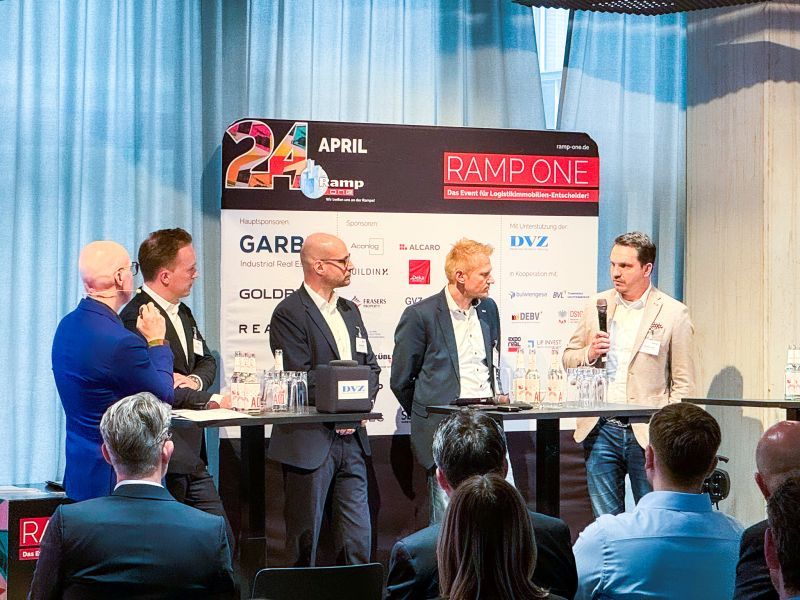Under the Lens: Brownfields with Alexander Hund
Three reasons why brownfield developments are the future of industrial real estate
The topic of brownfield developments is becoming increasingly central in real estate development conversations, especially in more industrialised regions and Western Europe where undeveloped land is scarcer and sustainability efforts, largely driven by legislation and investor interest, are being cranked up faster. Brownfields refer to underutilised land previously used for industrial or commercial purposes. Often, this land comes with dilapidated structures and contaminated ground.
There is no denying the fact that greenfield developments on a fresh slate of land are much simpler. Brownfields come with inherited complications requiring extra due diligence such as assessing site conditions, addressing contamination issues, and navigating regulatory requirements. However, these extra upfront hurdles, are usually well rewarded.
In a panel discussion at Ramp One hosted by DVZ Deutsche Verkehrs-Zeitung in Hamburg, Alexander Hund, Managing Director of CTP Deutschland, shared his insights on brownfield developments and their benefits, alongside other German real estate experts: Raphael Thießen Managing Director at Brownfield24 and Deutscher Brownfield Verband e.V., Julian Kux, Director Logistics at SEGRO Germany GmbH, and Martin Birkert, Country Manager Germany at MLP Group.

Alex reflects on the three core advantages that were discussed:
1. Well integrated into the urban fabric
Anyone in real estate knows how fundamental location is. With the rise of e-commerce and demand for last-mile logistics, backed with increasing ESG goals requiring smarter commuting for employees, location is especially important in our world of industrial real estate. Many brownfields were originally developed in city outskirts, but due to population growth, these cities have since grown around these industrial sites. This gives them seamless integration into today’s urban fabric enabling ease of movement and connection among people and goods, while also reducing CO2 emissions.
Reports and Studies from the Federal Environment Agency of Germany (Umweltbundesamt) indicate that in heavily industrialised regions like the Ruhr area, brownfields and underutilised industrial sites can account for around 13% to 18% of urban land. This high percentage reflects the legacy of extensive industrial activity and subsequent decline.
2. Substaintial ESG advantage
A key tenant of sustainability is smarter use of resources. In real estate, that largely means more efficient land use and utilisation of construction materials, both during construction and the lifespan of the structures. Brownfields address both these areas. First, they bring new life to under-utilised areas thereby reducing the need for greenfield developments which helps preserve biodiversity. Secondly, they encourage the restoration of old structures where deemed feasible; this reduces the need for extracting new materials and minimises the amount of materials that end up in landfills.
This provides a massive advantage for both developers and future facility tenants in meeting the E aspects of their ESG goals. Everything comes back to the carbon footprint of a building, also known as embodied carbon, which accounts not just the operations of a building, but also for the construction process.
3. Local authority support
Brownfield developments provide local authorities with tangible social, environmental, and economic benefits. CTP seeks to work closely with local authorities with all our projects as a core part of our Parkmaker business model – in which are parks are woven into local regions with a variety of partnership – like with technical schools, transport authorities, labour recruitment agencies – to allow us to grow together and collectively develop the region. However, brownfield projects call on a deeper level of cooperation since these projects’ surrounding are already much more developed and require closer cooperation. CTP has very positive experiences cooperating with local authorities on such brownfield projects, and with good reason. Bringing new activity to a once derelict area boosts the local economy and creates jobs and new space for residents to use – be it for work, housing, or third spaces.
- Local authorities recognise this and can reward developers in a variety of ways:
- Financial incentives: grants, subsidies and tax breaks
- Regulatory Assistance: streamlined permitting processes, more flexible zoning and land use policies
- Streamlined Permitting Processes: Local authorities may streamline the permitting and approval
- Technical Support: site assessment and environmental study support, expert consultations and advisory services

Beyond these benefits developers can enjoy today, Alex raises the point that environmental and land security concerns are on the rise and that brownfield developments will be mainstreamed. What we see in more industrialised regions today, like Germany, will eventually be experienced in regions which are more rapidly developing today – like in SEE.
“This is where CTP is truly uniquely positioned as Europe’s largest listed developer and long-term owner-operator of industrial and logistics real estate in Europe. Our portfolio spans regions at different phases of industrial and economic maturity and development, truly giving our clients a wide offering and our regional expertise. In Germany, a mature economy, we’re at the exciting forefront of learning how to leverage and rework brownfields for the advantage of not just us as developers, but also businesses, local authorities, and local communities – and there is much potential to be achieved!” – Alexander Hund
Here are some of CTP’s brownfields as of this year:
- CTPark Bremen, DE (2024 Brownfield24’s Best Logistics Brownfield Award in Germany)
- CTPark Wuppertal, DE
- CTPark Mülheim, DE
- CTPark Weiden, DE
- CTPark Brno-Líšeň, CZ
- Ponāvka, CZ
- Vlněna, CZ
Sign up to our newsletter
Get the latest insights from the industrial real estate market leader delivered into your inbox.